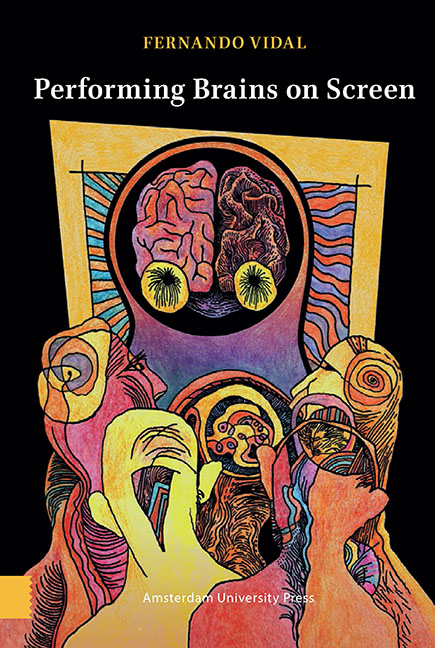Book contents
1 - Brainhood and the Cinema
Published online by Cambridge University Press: 13 May 2022
Summary
Abstract
This chapter outlines the main themes of Performing Brains on Screen. It explains the emphasis on performance (rather than mere representation), and critically examines the “deficit model” in the public understanding of science, the relevance of filmic genres, the interpretive strategy of “symptomatic reading,” and ways of approaching philosophy in film or film as philosophy. It discusses varieties of “brainfilms” and the universe of B movies, which form an important part of the filmic material examined in the rest of the book. It also sketches the history of the emergence of the view of the human as “cerebral subject,” as well as the “neuroscientific turn” in contemporary culture, both of which are central frameworks for the filmic performance of brains.
Keywords: brainfilm, cerebral subject, deficit model, neuroscientific turn, symptomatic reading, performance
Performing Brains on Screen explores how fiction film has enacted the belief that human beings are essentially their brains. It is a chapter in the history of two interrelated phenomena: on the one hand, a medium, the cinema; and on the other, the making of subjectivities as sustained by the view that humans are basically “cerebral subjects.” The statement You are your brain embodies one of the most widespread and influential ways of understanding the human in contemporary culture. The ideology of the “neuro” it encapsulates began to acquire prominence in the nineteenth century. However, it has become truly global only since the “Decade of the Brain” in the 1990s, largely thanks to the increase in the range of application of brain-imaging technologies, which in turn gave impulse to a protean “neuroscientific turn” across many disciplines and social and intellectual spaces (Littlefield and Johnson 2012; Vidal and Ortega 2017). The cinema, though, has been using brains as a MacGuffin, as well as more substantially rehearsing avatars of the cerebral subject, before the rise of the “neuro” as a major global creed. It has done so by turning physical brains into the protagonists of filmic action (as in the 1950s movies that show terrestrial or extraterrestrial “disembodied brains” pursuing generally evil intentions), or by giving brains (gruesomely displayed or invisible inside someone's head) an explicitly major role, as in brain transplantation films or their less carnal successors since the 1980s, in which brainmind contents are transferred and manipulated by means of information technologies.
- Type
- Chapter
- Information
- Performing Brains on Screen , pp. 13 - 34Publisher: Amsterdam University PressPrint publication year: 2022



